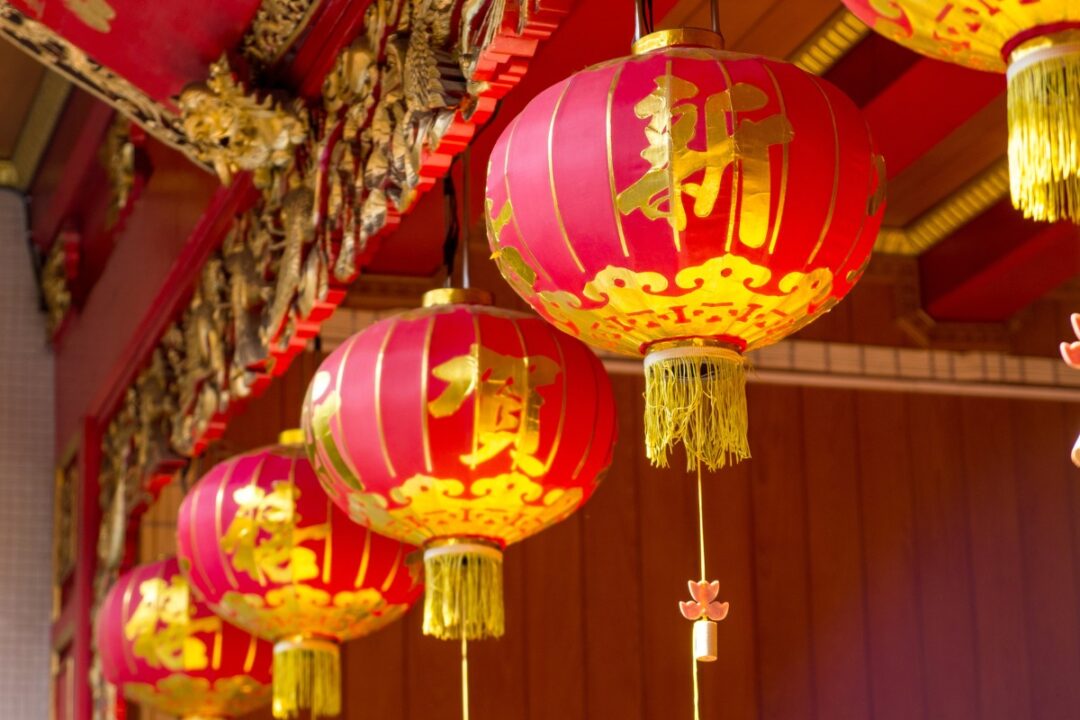Chinese New Year, or the Spring Festival, is perhaps the biggest celebration in Hong Kong that signifies the beginning of a new time. To mark the grand occasion, decorations and ornaments are installed across the city to showcase the boisterous holiday and importance it carries in Chinese tradition. Displays can be seen at malls and in other public areas in just about every road and back alley of the city. Scroll through to see what such CNY decoration displays feature, where to view them in Hong Kong, and find some inspiration for ways to adorn your house for the biggest festival of the year.
Chinese knots (中國結)
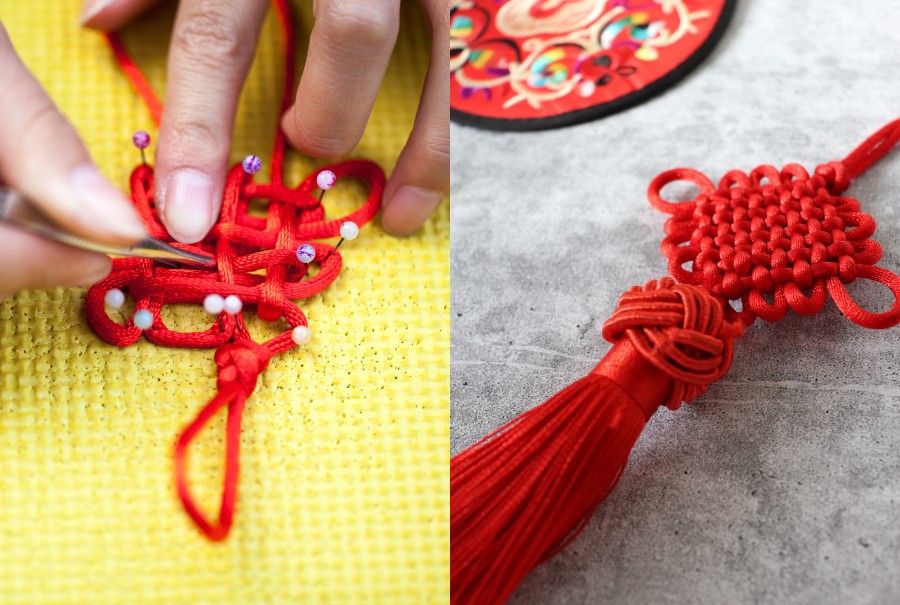
Once a way to historically record information, Chinese knots are now an intricately woven handicraft made of one cord that’s iconic among Chinese New Year decorations. Not straying from the lucky red colour we’ve seen so far in the festive décor, Chinese knots symbolize a prosperous, long life. The knots are normally round to indicate completeness and wholesomeness. And, the fact that they’re knotted also portrays a strong, united bond with your loved ones. Chinese knots can be seen as ornaments hung on doors, walls, and around shops. They come in all sizes, so it won’t be hard to spot this eye-catching gem.
Fai chun (揮春)
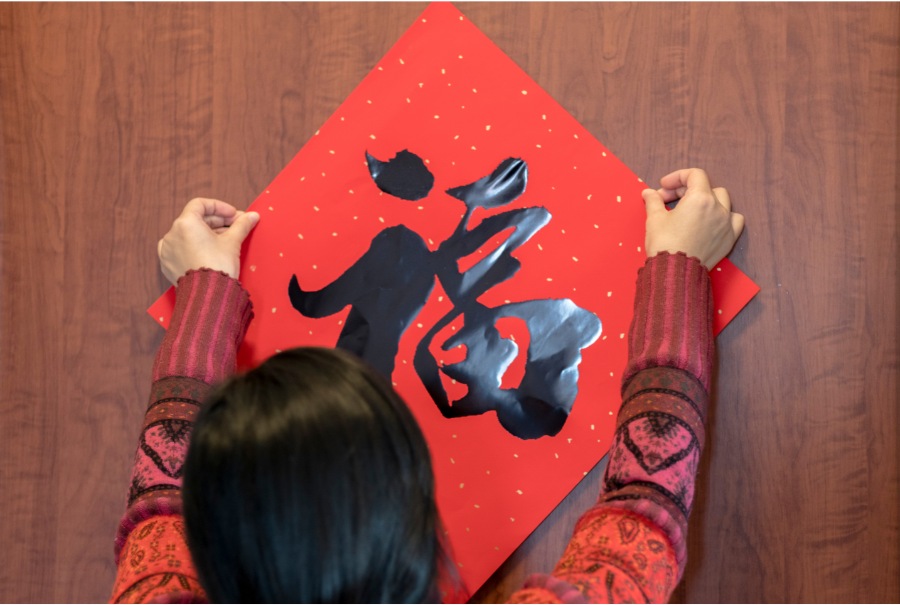
When visiting friends and relatives from door to door during the holiday, the first thing spotted are fai chuns. Fai chun, also known as door couplets, are the red strips of paper hung at the entrances of homes featuring a calligraphy of characters denoting success, good luck, and fortune. One character in particular, fuk (福), which means good fortune, is often times hung upside down on a diamond-shaped sheet of paper to signify the pouring of good luck onto the individual. These lucky sayings are usually hung in pairs in auspicious regards, but can also double or quadruple the luck.
Firecrackers (鞭炮)
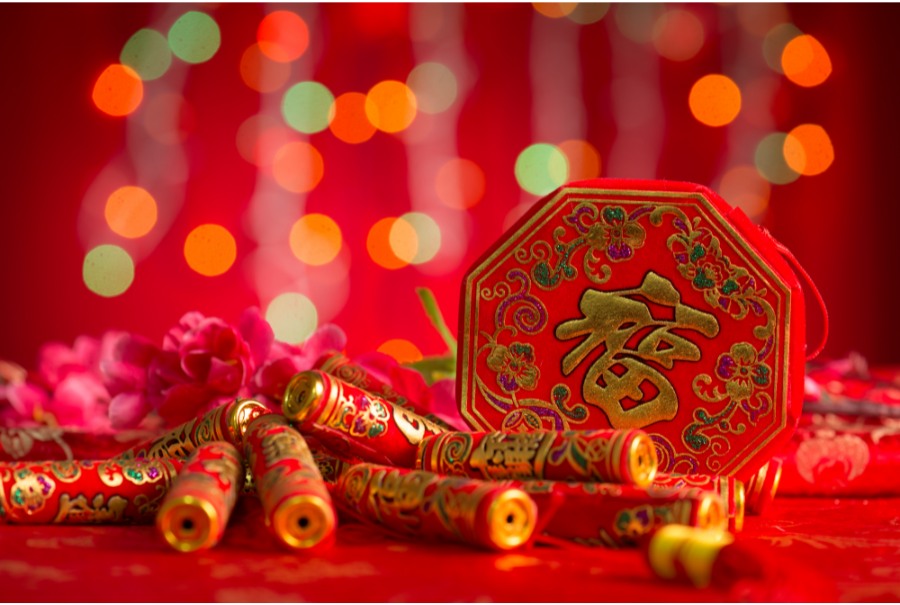
To amp up the loud and boisterous festivities, firecrackers are one display that is hard to miss. Firecrackers are set up in front of stores and businesses, as well as temples, to drive out bad luck and evil spirits. Legend has it that a monster comes out every New Year’s Eve to destroy a village and, to scare off the monster, burning bamboo to produce an explosive sound does the trick. The fiery and smoky display literally starts the year with a bang. It’s important to note that the red paper left from the firecrackers aren’t immediately swept away because doing so means sweeping away good luck and fortune.
Hanging lanterns (燈籠)
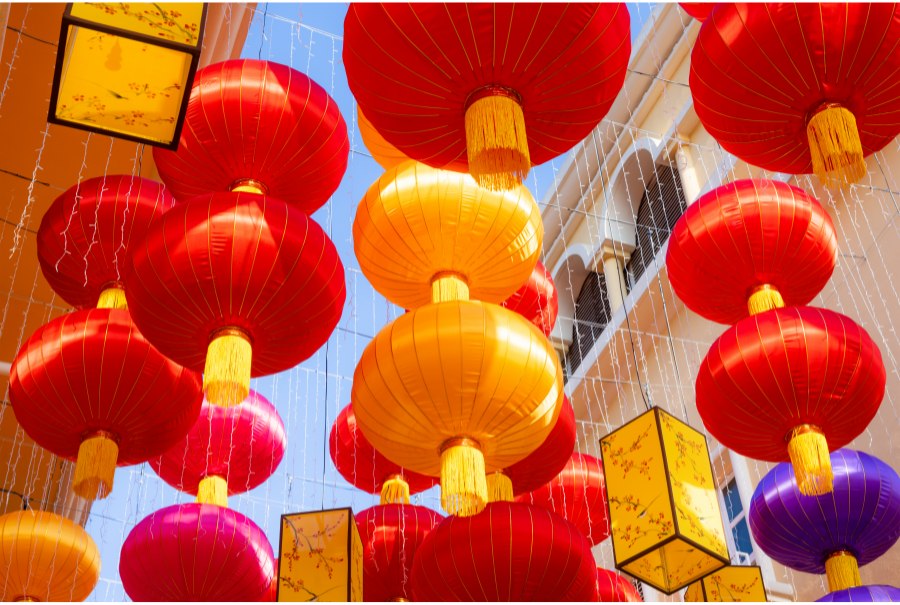
Red Chinese lanterns are a prominent staple in Chinese culture, and perhaps the most striking emblem associated with Lunar New Year. They spark the new year festivities with their jovial aesthetics, but also create such a beautiful visage at night when lit that it’s no wonder they’re a symbol for happiness. The Chinese lanterns are known to ward off evil and bad luck and their red colour is associated with good luck. Find them at home, temples, as pop-up displays inside malls and on the streets of the city. One notable place to see the hanging red lanterns is Lee Tung Avenue in Wanchai.
Lunar New Year flowers
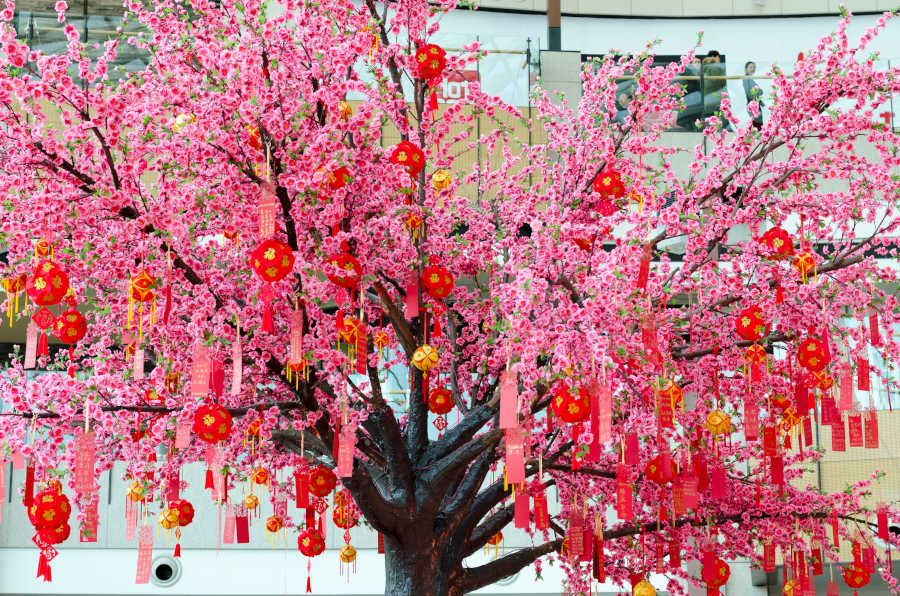
Spring Festival brings with it fresh beginnings and fresh flowers! There are a number of blooming flowers and plants that represent a new, prosperous year ahead. Several favourites are mandarin or kumquat trees, cherry blossoms, bamboo, and orchids. Kumquat orange trees are quintessential Chinese New Year decorations seen almost everywhere during the festivities. The fruits represent prosperity as kumquat sounds the same as “gold” and “good luck” in Chinese.
Cherry blossoms are springtime flowers that represent new beginnings and longevity with their long branches. Tai Po waterfront is a popular spot to view these beauties. Bamboo is another floral décor known to bring in good luck and fortune. Their sturdy build also symbolizes strength. Orchids are elegant-looking flowers that sustain throughout every season. They make for beautiful gifts during Spring Festival as they represent abundance, fertility, luxury, and beauty.
New Year paintings (年畫)
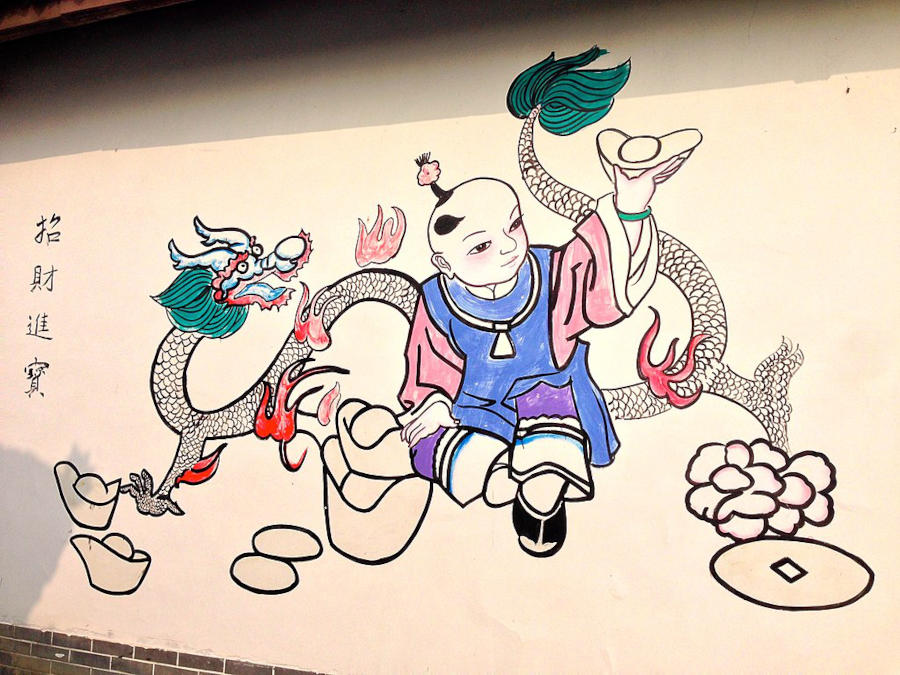
New Year greetings! New Year paintings arose from the Tang Dynasty with pictures that told of Chinese tales and folklores of gods protecting the people from evil. Over time, Chinese New Year paintings evolved into simpler images that go hand-in-hand with fai chun, featuring beautifully written calligraphy, legendary figures, and plants. A common sighting is the zodiac animal of the year with the Chinese character of that animal also written. Other images may depict dragons, gold coins, and imagery that hold auspicious meanings for good blessings.
Paper cuttings (剪紙)
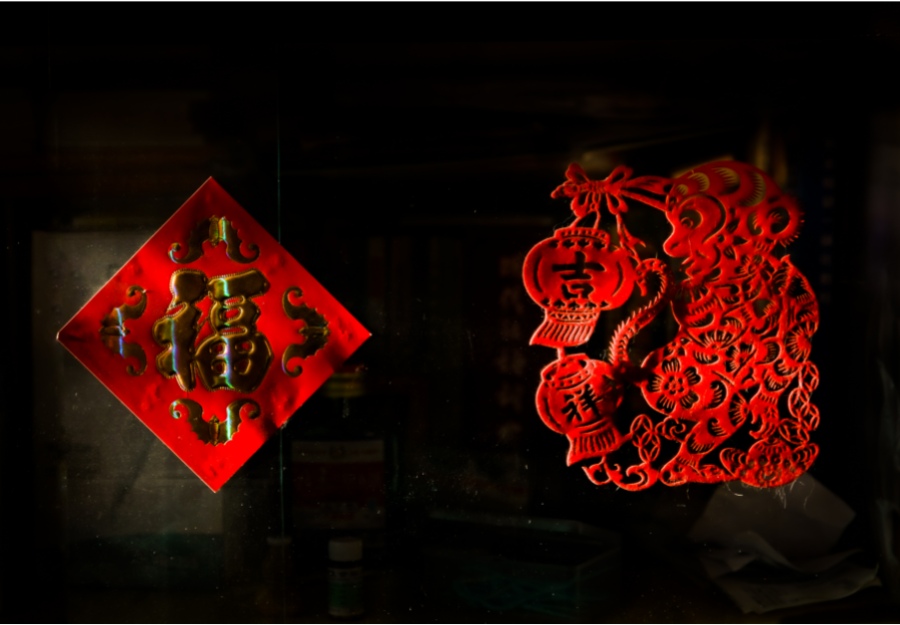
Using scissors and knife to cut paper into symbols and characters is a fun-filled pastime activity to rally in your troops. The cuttings typically feature one character in Chinese folk art tradition or an image that represents wishes and desires for the coming year. Characters include Fu (福), Lu (祿), Shou (寿), and Xi (禧), meaning luck, wealth, longevity, and happiness. Other paper cuttings feature the zodiac animal representing the new year, or fruits with auspicious meanings. These detailed depictions are then pasted onto transparent surfaces and windows, just like an ornament. Though time-consuming, nowadays, some people opt for the modern version of paper cuttings made of plastic.
Red packet tree (红包树)
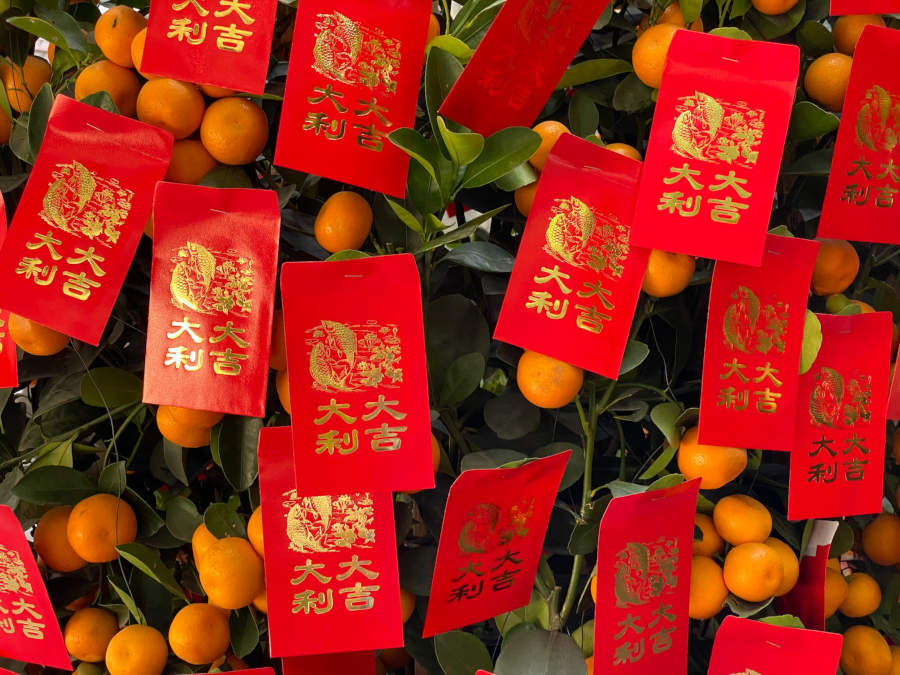
A modern take on traditional Spring Festival decorations are red packet trees. Red packets (called lai see) are notorious for being filled with lucky money that’s gifted to friends and relatives. Hence, adding a creative twist to Chinese New Year trees, Chinese New Year wreaths and other plants are red packet trees, or better termed, money trees. They symbolize wealth and good fortune. Red packets can also be found hanging on kumquat trees to bring in extra abundance, and come in various sizes and designs. If you want a boost of luck through your Lunar New Year decorations, you can’t go wrong by decking out in more red and lucky money.
Header image credits: ShutterOK via Canva


